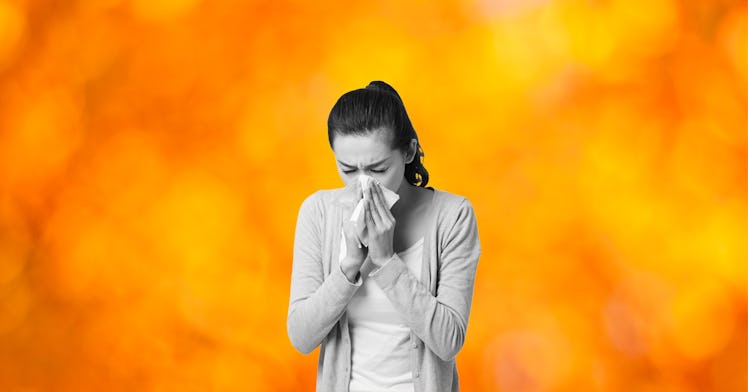Why Does Everyone Get Sick At The Same Time?
The flu virus stays the same year-round; it's people who change, doctors confirm.

It does not make intuitive sense that there would even be a flu season — the flu a virus, not the McRib. And yet the flu peaks in the winter months every year due to a combination of the cold weather, lack of vitamin D exposure, and other lifestyle changes that happen in winter months. The regularity makes flu season something of a cultural event, a shared experience we collectively dread and parents, in particular, brace for like a viral hurricane.
“Flu season happens because our body’s ability to fight the virus is lowest in the wintertime,” explains physician Dr. Gerrit Keferstein. “Virus load seems to be similar in summer versus winter.”
That is the slightly technical way of saying that the flu does not migrate or return to spend holidays with the family. The flu is a fixture. Our immune systems just happen to hit low ebb at more or less the same time.
The flu season can start as early as the fall but tends to peak between December and February in the U.S. before heading south of the equator between June and September. There is some evidence that the flu virus itself is more stable in colder, drier climate, but Keferstein and other experts blame people’s a lack of sun exposure for the winter spike in flu cases. Lower sun exposure results in lower levels of Vitamin D. Vitamin D stimulates the production of antimicrobial peptides which help to fight off infections. Less sunlight in the winter time means less protection from the flu. When exposed to the flu virus, people get infected by it more in the winter than summer, research confirms.
Vitamin D exposure has a lot to do with increased flu risk, physician Dr. Chirag Shah agrees, but adds that there are other reasons for such seasonal vulnerability. Dry, cold air causes mucous membranes to dry up, wearing away at a line of defense know as mucociliary clearance, and making it easier for the virus to get through. Winter temperatures keep people inside with their compromised immune systems, creating the perfect petri dish for the flu to spread.
“The cold keeps people indoors, increasing the likelihood of transmission of a virus from one person to another,” Shah explains.
Finally, the concentration of holidays in the winter months exacerbates the problem. Stress, which peaks around Thanksgiving, Hanukkah, Christmas festivities, makes it easier for people to get sick, and all that celebrating may mean increased intake of sugar and alcohol, which are bad for the immune system. This is why there might be minor increases in flu-like symptoms even in subtropical climates where there really isn’t a flu season at all.
“The more sun, the fewer flu infections,” Keferstein says. “It is not just the Vitamin D. Sunlight directly inactivates the flu virus.”
This article was originally published on